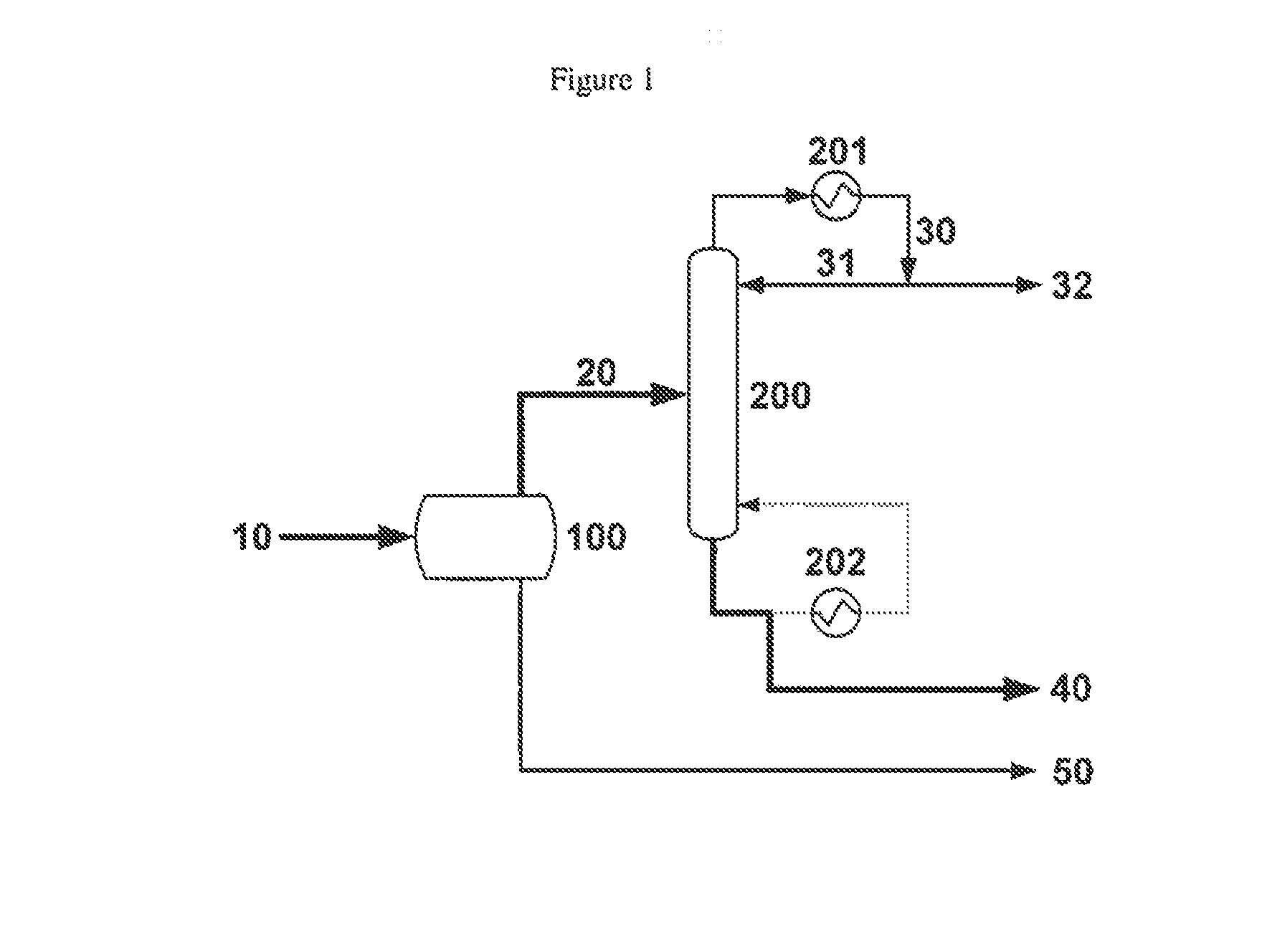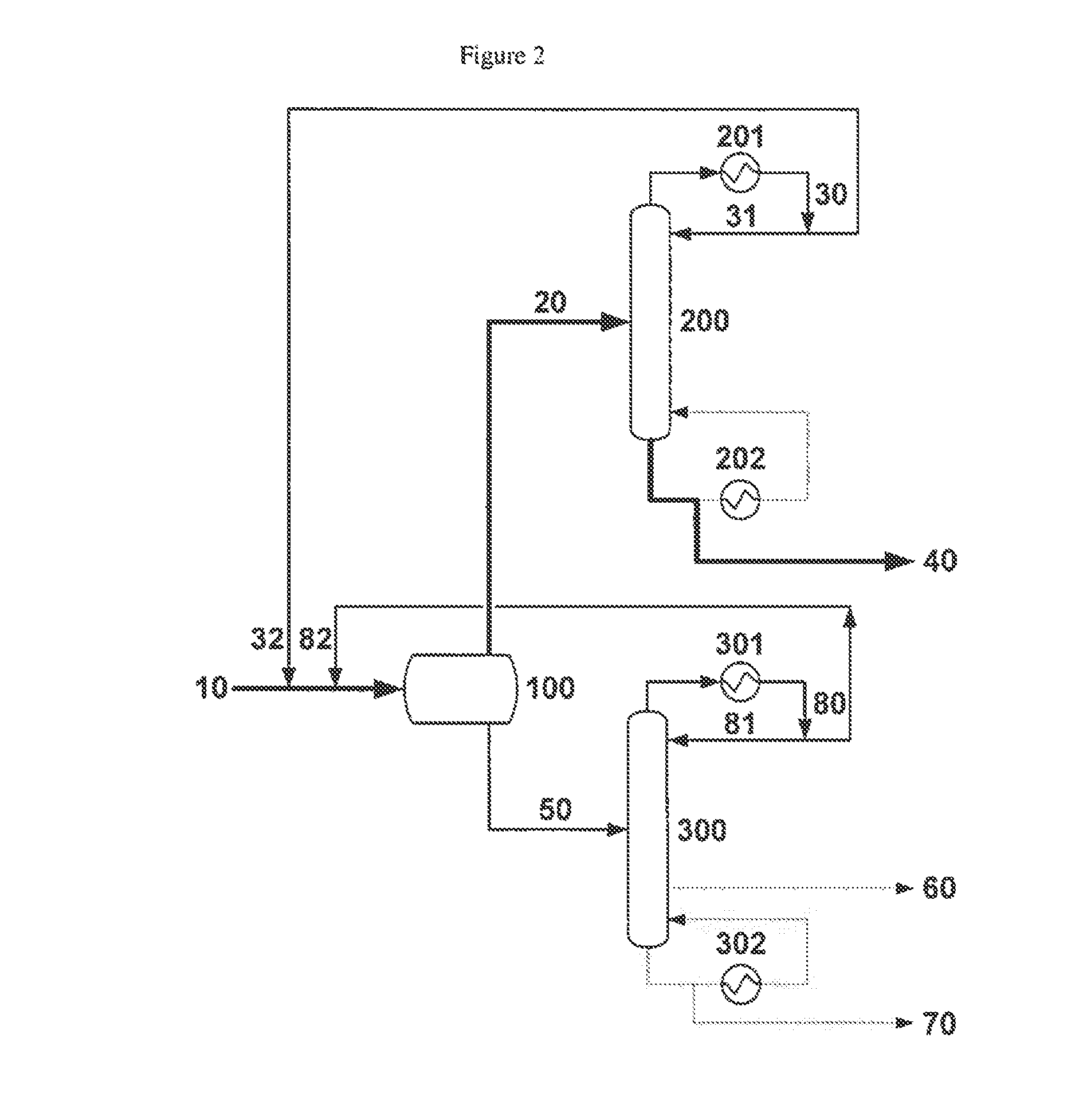Dehydration process
- Summary
- Abstract
- Description
- Claims
- Application Information
AI Technical Summary
Benefits of technology
Problems solved by technology
Method used
Image
Examples
example 1
[0061]A liquid methacrolein reactor effluent comprising 31.2% methacrolein, 61.2% water, 4.1% methanol, 0.9% dimethylamine, 1.3% acetic acid, 600 wppm hydroquinone and 600 wppm phenothiazine is fed at 671 g / h into a liquid-liquid decanter. The temperature and pressure of the decanter are 5° C. and 1 atm, respectively. The feed splits into two phases in the decanter, with an organic to aqueous phase mass ratio of ca. 1:2.5. The organic phase effluent from the decanter, comprising 94.8% methacrolein, 2.8% water and 0.9% methanol, is accumulated.
[0062]The accumulated organic phase effluent from the decanter is fed to a methacrolein dehydration column at a rate of 760 g / h. The dehydration column is a glass, 20 tray, 33 mm Oldershaw column equipped with a forced circulation reboiler and an overhead chilled water cooled condenser. The organic phase effluent from the decanter is fed to the dehydration column at the top tray and no reflux is returned to the column; thus, the dehydration col...
PUM
| Property | Measurement | Unit |
|---|---|---|
| Percent by mass | aaaaa | aaaaa |
| Percent by mass | aaaaa | aaaaa |
| Percent by mass | aaaaa | aaaaa |
Abstract
Description
Claims
Application Information
 Login to View More
Login to View More - R&D Engineer
- R&D Manager
- IP Professional
- Industry Leading Data Capabilities
- Powerful AI technology
- Patent DNA Extraction
Browse by: Latest US Patents, China's latest patents, Technical Efficacy Thesaurus, Application Domain, Technology Topic, Popular Technical Reports.
© 2024 PatSnap. All rights reserved.Legal|Privacy policy|Modern Slavery Act Transparency Statement|Sitemap|About US| Contact US: help@patsnap.com










